California Cyanobacteria and Harmful Algal Bloom (CCHAB) Network
California HABs Portal | Background and Description | Subcommittees | Products | Membership | Meetings | More Information
Announcements
- Refer to CA HABs Portal to learn more about Healthy Water Habits, Human Health Impacts, Domestic Animal Impacts and Fish and Wildlife Impacts.
- SWAMP released a California Freshwater Harmful Algal Blooms Assessment and Support Strategy that outlines actions and infrastructure being developed to support local response to HAB events.
Mission
- To work towards the development and maintenance of a comprehensive, coordinated program to identify and address the causes and impacts of cyanobacteria and harmful algal blooms (HABs) in California.
Background and Description
The CCHAB Network, formerly the Statewide Blue-Green Algae Working Group, was established in 2006 in response to record-setting toxin producing blooms in the Klamath River reservoirs. Since its establishment, the CCHAB Network has developed guidance for responding to HABs, including action levels for cyanotoxins; held trainings on HAB identification and sampling; and funded a number of grant projects. These efforts demonstrated a need for the development of a long-term vision and strategic plan for identifying and managing HABs in California. Four key goals were identified – prioritization of management questions, synthesis of existing data, identification of data gaps, and the development of communication tools.
Objectives of the CCHAB Network?
Develop a unified multi-entity program to identify and address HABs in California's freshwater ecosystems.
Promote improvements in, and coordination of monitoring assessment, reporting, and management of HABs in California.
Develop collaborative relationships among entities (e.g. federal, tribal, state, and local agencies, academic researchers, end-users and stakeholders) responsible for addressing HAB concerns and impacts on beneficial uses.
Coordinate with the California Harmful Algal Bloom Monitoring and Alert Program (CalHABMAP).
Make efficient use of federal, tribal, state, regional, and academic resources to address cyanobacteria and HAB concerns by sharing information to avoid duplicative efforts; promoting research, monitoring, and assessment; identifying technical and policy gaps; and communicating HAB concerns to the public.
Work collaboratively toward public awareness of the risks associated with HABs to people, pets, livestock and wildlife
CCHAB's Relation to the Monitoring Council?
The CCHAB Network is a workgroup of the California Water Quality Monitoring Council. The Monitoring Council establishes common policies and guidelines for the workgroups and the programs they represent, acts as a clearinghouse for standards, guidelines, and collaboration; resolves key issues that affect multiple workgroups; provides support for workgroup actions, and improves visibility of workgroup efforts. The CCHAB Network will keep the Monitoring Council apprised of progress towards workgroup goals and will raise issues to the Monitoring Council that cannot be resolved within the workgroup or that may affect multiple workgroups of the Monitoring Council.
Subcommittees
Contact the current CCHAB Network co-chairs listed below for a current list of active subcommittees and contact information for the corresponding subcommittee leads.
Products
CyanoHAB Guidance for Recreational Water Uses
The California Cyanobacterial and Harmful Algal Bloom Network (CCHAB) provides guidance to assist environmental and public health managers in responding to inland harmful algal blooms (HABs). Inland HABs include blooms occurring in freshwater and estuarine environments. The primary audience for the guidance are public health officials, environmental health officials, resource managers, and other interested persons who require a streamlined approach to address the risks posed by HABs as well as templates for advisory signs.
Participating agencies - State Water Resources Control Board, Office of Environmental Health Hazard and Assessment (OEHHA), and California Department of Public Health (CDPH) - have developed and are further refining guidelines for addressing human and animal health concerns for cyanobacteria HABs in recreational waters.
- Refer to the current California Guidelines for Cyanobacteria in Recreational Inland Waters available on the CA HABs Portal
- 2016 Decision Tree for Posting and De-posting Health Advisories for CyanoHABs (for planktonic blooms)
- 2016 Trigger Levels for Posting and De-posting Health Advisories for CyanoHABs (for planktonic blooms)
- 2016 Appendix to the CCHAB Preliminary Changes to the Statewide Voluntary Guidance on CyanoHABs in Recreational Waters
- 2010 Blue-Green Algae Draft Voluntary Guidance Document, prepared by CCHAB Network
Membership
California Cyanobacteria and Harmful Algal Bloom Network is made up of a diverse group of stakeholders that address, research, manage, and/or regulate cyanoHAB concerns in California. The CCHAB Network is composed of federal agencies, state agencies, tribal governments, local agencies, academics and researchers, and other stakeholders.
Co-Chairs (Summer 2022 - Summer 2024)
Karen Odkins
Freshwater and Estuarine Harmful Algal Bloom Program Lead
Phone: (916) 413-9592
Email: Karen.Odkins@Wildlife.ca.gov
Jayme Smith
Southern California Coastal Water Research Project
Phone: 714-755-3220
Email: jaymes@sccwrp.org
Sarah Ryan
Big Valley Band of Pomo Indians
Phone: 707-263-3924 x132
Email: sryan@big-valley.net
Participating State Agencies
State Water Resources Control Board
and Regional Water Quality Control Boards
California Department of Public Health (CDPH)
Office of Environmental Health Hazard Assessment (OEHHA)
California Department of Fish and Wildlife
California Department of Water Resources
Participating Federal Agencies
National Oceanic and Atmospheric Administration (NOAA) HABs
U.S. Environmental Protection Agency
Participating Tribes
Big Valley Band of Pomo Indians
Other Participating Organizations
Blankinship & Associates, Inc.
California State University, Moss Landing Marine Laboratories
Clear Lake Environmental Research Center
City of Watsonville Public Works
Del Norte County Department of Health and Human Services
East Bay Regional Park District
Humboldt County Department of Health and Human Services
Lake County Environmental Health
Metropolitan Water District of Southern California
San Francisco Estuary Institute
Santa Clara Valley Water District
Sonoma County Environmental Health and Safety
Southern California Coastal Water Research Project
Thomas Gast & Associates Environmental Consultants
University of California (UC Davis) Clear Lake Aquatic Website
University of California (UC Santa Cruz) Monterey Bay Harmful Algal Blooms









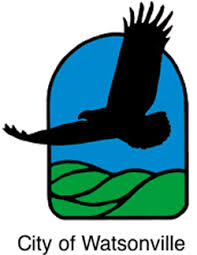
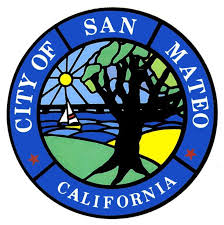

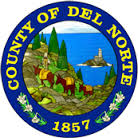

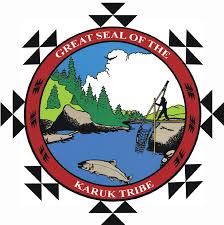
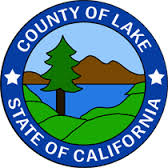
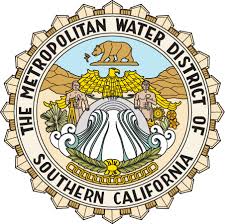


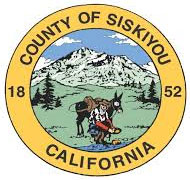


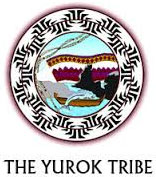








Meetings
Meeting notices and agenda (as well as other HAB-related news and resources) are distributed via the CCHAB Network list serve. See the More Information section below for information on how to subscribe.
2024
- November 20th, 9AM, Teleconference
- Agenda
- Minutes
- Meeting Recording
- August 14th, 9AM, Teleconference
- Agenda
- Minutes
- Meeting Recording
- April 24th, 9AM, Teleconference
- Agenda
- Minutes
- Meeting Recording
- January 31st, 9AM, Teleconference
2023
- October 11th, 9AM-Noon, Teleconference
- August 2nd, 9AM-Noon, Teleconference
- April 26th, 9AM-Noon, Teleconference
- January 18th, 9AM-3PM, Teleconference
2022
- October 12th, 9AM-Noon, Teleconference
- July 27th, 9AM-Noon, Teleconference
- April 20th, 9AM-Noon, Teleconference
- January 19th, 9AM-2PM, Teleconference
2021
- October 27, Teleconference
- July 21, Teleconference
- March 29, Teleconference
2020
- December 15, Teleconference, 9AM-12PM
- October 15, Teleconference, 9AM-12PM
- July 7, Teleconference
- March 9, Rancho Cordova, RWQCB 5
2019
- December 19, Sacramento, Cal EPA
- October 4, Sacramento, CalEPA
- July 12, Sacramento CalEPA
- Agenda
- Meeting Notes
- Charter Revision
- April 12, Sacramento CalEPA
- January 18, Sacramento
- Agenda
- Survey Results
- Program Update Template
- Please fill out and submit to Joseph Westhouse (Joseph.Westhouse@waterboards.ca.gov) and the co-chairs listed above prior to, or within 1 day following the meeting.
2018
- October 15th, Sacramento
- August 3, Sacramento
- April 26, Costa Mesa
- January 25, Natural Resources Building – CA Department of Water Resources 1416 Ninth Street, Sacramento, CA
- Agenda
- Notes
- Presentations:
- Review of State Freshwater HAB Programs - A Short Introduction - Beckye Stanton, Office of Environmental Health Hazard Assessment
- Citizen Science Monitoring for Harmful Algal Blooms - Erick Burres, CA Water Boards
- Division of Drinking Water: One of Many Partners During HABs Response - Amy Little and Sheri Miller, Division of Drinking Water
- One Health Harmful Algal Bloom System (OHHABS) - Susan Paulukonis, California Department of Public Health
- Effect of Sample Handling on Anatoxin-a Stability - Gabie Gutierrez, Bend Genetics

2017
- October 26, CCHAB Network Sacramento – San Joaquin Delta Conservancy Conference Room, 1450 Halyard Drive, Suite 6, West Sacramento, CA 95691
- Agenda
- Notes
- Presentations:
- From Green Water to Gene Counts - Tim Otten, Bend Genetics
- July 27, CCHAB Network Meeting Sacramento
- April 13, CCHAB Network Meeting Sacramento
- January 26, CCHAB Network Meeting Sacramento
- Agenda
- Notes
- Presentations:
- Lessons Learned from 2016 HABs season - Beverley Anderson-Abbs
- NPDES Aquatic Pesticide Permits – Russell Norman
- EPA HABs Webinar announcement - U.S. EPA R9
2016
- September 29, CCHAB Network Meeting Sacramento
- June 30, CCHAB Network Meeting Sacramento
- Agenda
- Notes
- Draft CCHAB Network Charter
- Presentations
- CCHAB Charter Development Sub-committee Report - Angela Murvine
- EPA Update on Development of Recreational Ambient Water Quality Criteria for Cyanotoxins - John Ravenscroft
- California Water Quality Monitoring Council's HABs Initiative - Jon Marshack
- Evidence-based Community Input for CyanoHABs Signage - Lori Copan and Sandy McNeel
- OHHABS: One Health Harmful Algal Bloom System - Sandy McNeel
- May 31, CCHAB Signage Field Testing
- CyanoHABs Field Testing Presentation, presented by Lori Copan
- April 13, CCHAB Network Meeting Sacramento
- Agenda
- Presentations
- Use of Satellite to Examine CyanoHABs in California's Large Waterbodies, presented by Randy Turner
- Co-Chairs: Zane Poulson, Susan Fricke and Meredith Howard
- Subcommittees
- January 21, Sacramento, CA
2014
- December 18, Sacramento CA
- Agenda
- Presentations
- California CyanoHAB Network – Johanna Weston, State Water Board
- Surface Water Ambient Monitoring Program Cyanotoxin Program – Karen Taberski, San Francisco Bay Regional Water Board
- Who Are We? California Drinking Water Program – Amy Little, State Water Board
- Increasing Efficiency and Effectiveness Through Collaboration – Jon Marshack, California Water Quality Monitoring Council
Other CCHAB Presentations
Western Regional Epidemiology Network – May 21, 2015
Monitoring and Assessment Partnership Webinar – May 19, 2015
For More Information
![]() Subscribe online to receive updates by email regarding activities of the California Cyanobacteria and Harmful Algal Bloom Network under the General Interests tab.
Subscribe online to receive updates by email regarding activities of the California Cyanobacteria and Harmful Algal Bloom Network under the General Interests tab.
For general questions, please email cyanoHAB.reports@waterboards.ca.gov. For specific questions, please consult the table of state agency contacts for HAB response and email direct inquiries to the appropriate staff person.

